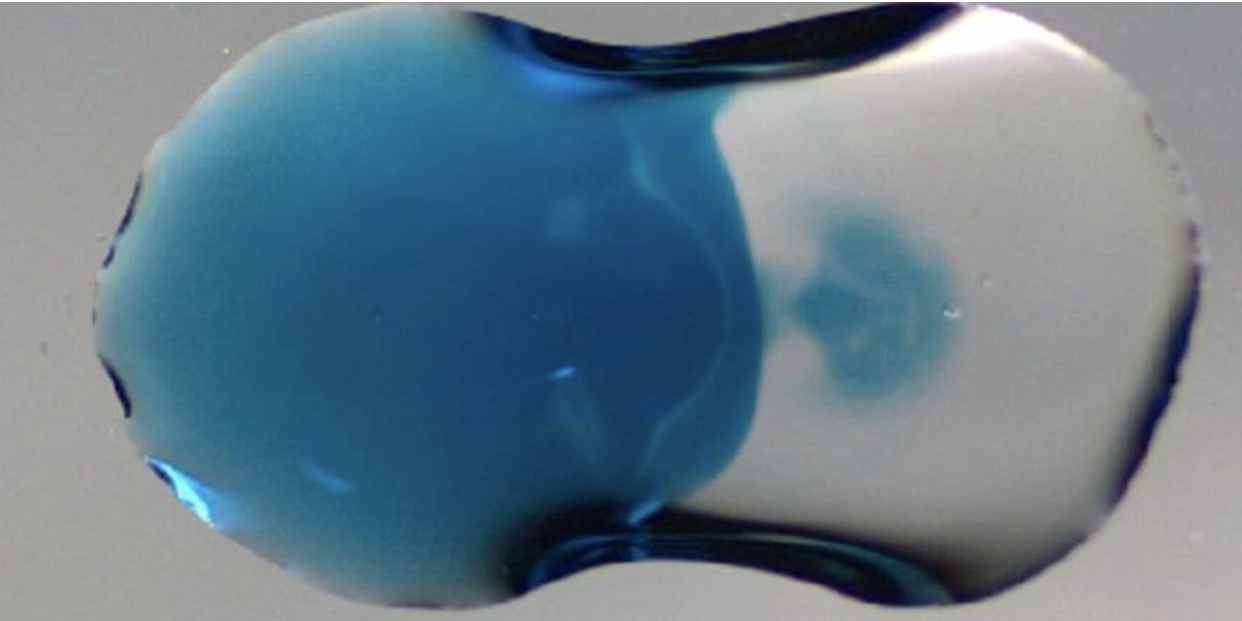Mesmerizing: Watch the Exact Moment Two Water Droplets Merge Into One

Scientists used two high-speed cameras to capture the exact moment two liquid droplets touched.
The cameras snapped pictures of an elusive—and mesmerizing—surface jet that formed between the liquids.
Understanding how fluids interact could have implications for fields like 3-D printing, which rely on the mixture of many different substances.
Lights! Camera! Action! Scientists from the University of Oxford and the University of Leeds have pointed two high-speed cameras at water droplets in order to catch the exact moment they merge. The results are mesmerizing.
How to control mixing between two droplets? Tune the interfacial tension to either enhance of suppress surface jets. Beautiful video captured in our labs by @FluidsTom - with thanks to the @royalsociety and @EPSRC @UKFluidsNetwork (with @RafaelCastrejon and @markwilsonleeds) pic.twitter.com/1Z9aA0voiL
— Oxford Fluid Dynamics Lab (@OxfordFluids) February 24, 2020
"In the past, there have been instances when two droplets impact and you were left wondering whether they have mixed or has one droplet just passed over the other," fluid mechanics researcher Alfonso Castrejón-Pita, of the University of Oxford, said in a press statement. "Having two cameras record the droplet interaction from different viewpoints answers that question."
The scientists mixed a dyed-blue droplet with a clear droplet and filmed the exact moment they mingled with a camera capable of shooting up to 25,000 frames per second. Within less than 15 milliseconds of the droplets touching, scientists were able to catch a surface jet exchange between them.
Capturing this liquid game of bumper cars allows researchers to better understand how fluids interact with each other. There are a number of applications for fluid dynamics. Lead study author Thomas Sykes, of the University of Leeds, hopes this research could make 3-D printing easier and more efficient. 3-D printers sculpt objects out of a many different types of chemical substances.
"We often need those chemicals to be positioned in a highly specific way," Sykes said in the statement. "For example, we may want the droplets to lie side by side or for one droplet to rest on another. On other occasions we want them to mix completely, to produce a desired reaction to 3D print more complex structures.”
You Might Also Like

 Yahoo News
Yahoo News 
